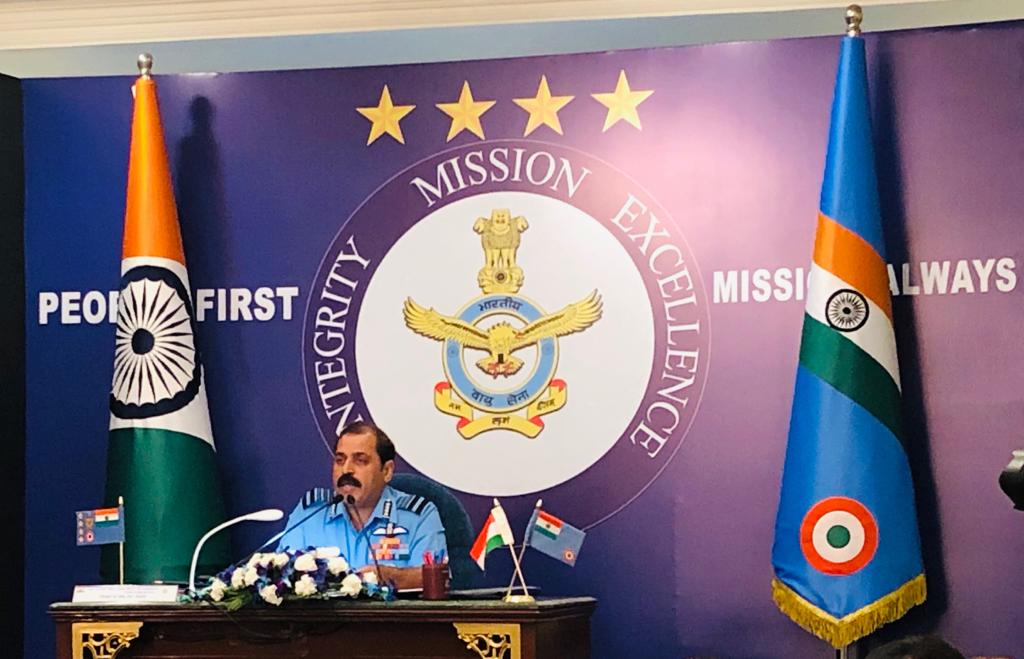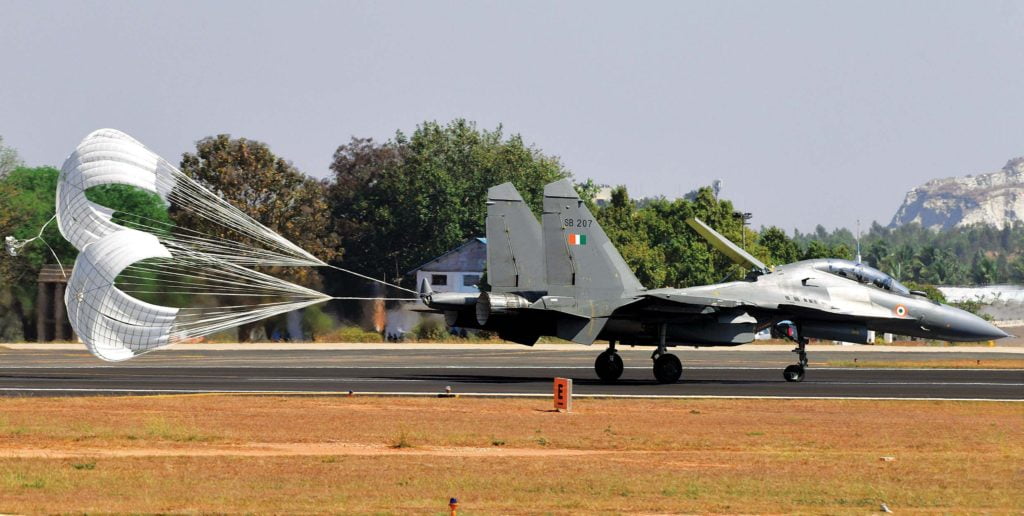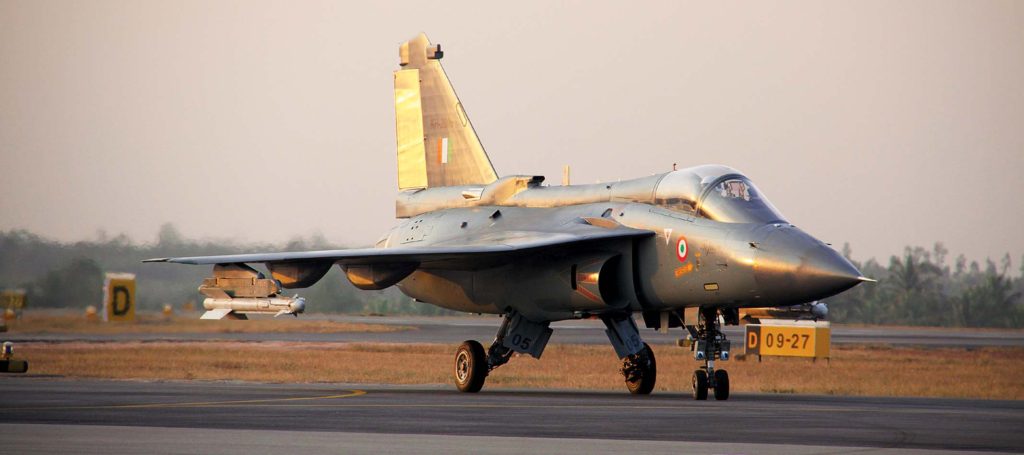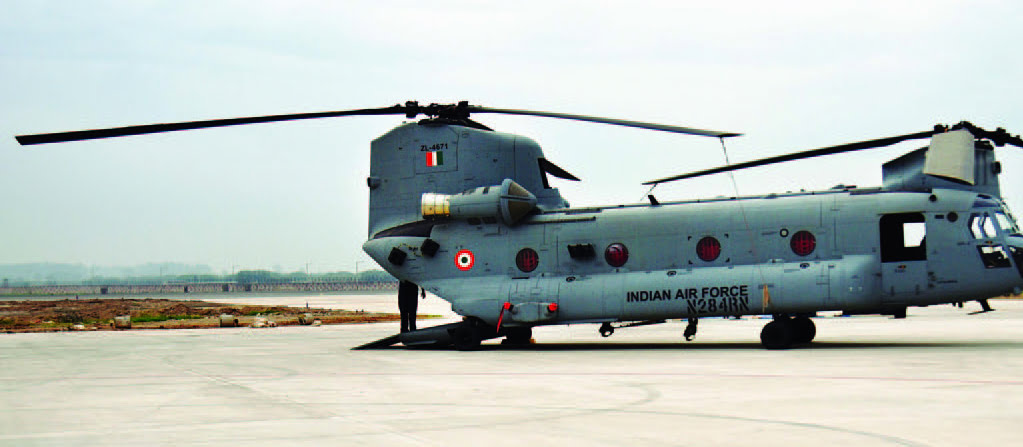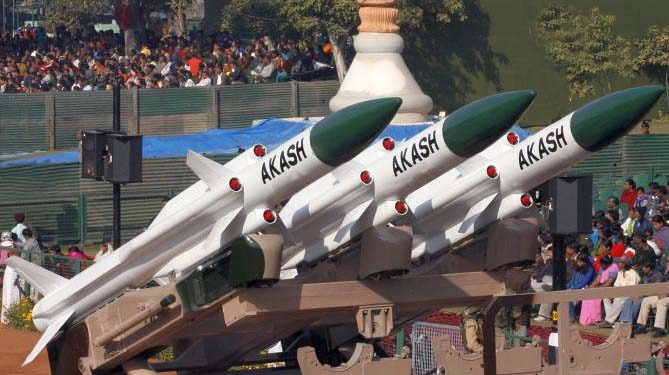By Gulshan Luthra and Shweta Sehgal
Four days after assuming charge as the Chief of Air Staff, Air Chief Marshal RKS Bhadauria told at the customary pre-Air Force Day press conference on October 4th that the Air Headquarters was also looking at 80 to 90 percent of Made in India jets in the Indian skies in about two decades. That is indeed quite ambitious but it looks like the Ministry of Defence is encouraging the Indian Air Force (IAF) to plan in this direction as demands for finance from the armed forces are high, acquisition of global technology takes time besides higher costs, and it’s better anyway to develop and go in for high technology systems indigenously.
Development for the Light Combat Aircraft (LCA) for instance is a priority, and IAF has already given Final Operational Clearance (FOC) to HAL, and an order for 83 aircraft is on the anvil.
IAF is also extending full support for the indigenous development of AMCA, or the Advanced Medium Combat Aircraft, that should have all the contemporary and futuristic EW and stealth capabilities. There should be some visibility on this project by 2025.
The Air Chief indicated that IAF was giving due consideration to counter the “new threat” of drones, and although he did not say, it appears that a chunk of its allocation will go towards acquiring various types of unmanned aircraft.
IAF is in talks with US General Atomics for Avenger unmanned systems while DRDO sources told India Strategic that work is already on to develop small (about 6 inch) and big remotely piloted aircraft with varying capacities of staying in the air. They could be used for surveillance and also to hit hostile targets.
IAF marks its 87th anniversary on October 8th. The Air Chief expressed “pride and satisfaction” over the achievements during these years, and said that emphasis now was on newer EW (Electronic Warfare) technologies and precision systems “to deter and punish the enemy as and when the need arises.” Even helicopters were now being upgraded with ISR (Intelligence, Surveillance and Reconnaissance) and EW systems while the acquisition of potent heavy lift Chinooks and Apaches “have given a punch to our capability.”
The emphasis now is on indigenous development of these systems, and DRDO’s Netra aircraft, which will be in the Flypast, was performing very well.
“We encourage upgradation indigenously,” a sentence that should actually trigger the private industry to be proactive in defence manufacturing.
The country’s defence research arm, Defence Research and Development Organisation (DRDO) and HAL are going to showcase the Light Combat Aircraft (LCA), Light Combat Helicopter (LCH) and variants as well as the BEL-built and modified Akash Surface to Air (SAM) missile at the annual Air Force Day Parade at Air Force Station Hindon on the outskirts of New Delhi.
Air Chief Marshal Bhadauria assured that IAF is “always prepared to meet any contingency” and maintain “effective air power” and periodic upgradation, training and modernisation are suitably planned and executed in this perspective.
He observed that the Rafales, whose delivery begins on Indian Air Force Day in France, and the Russian S-400 anti-missile system together “will greatly enhance our operational capability in times to come.”
The first lot of Rafales will formally be received by Defence Minister Rajnath Singh just as the newly-appointed Air Chief takes the salute at the Parade and Flypast that will showcase nearly all the aircraft in IAF’s inventory including the DRDO-developed Netra AESA radar aircraft fitted on the Brazilian Embraer jet. IAF should get another lot of Rafales within 2020, and the entire supply of the 36 ordered by 2022 as planned.
“By May 2020, we will be receiving four Rafale fighter jets. It will be only then that we will see the aircraft in the Indian skies. The advantage of getting the Rafale in May next year will be that our pilots will be substantially trained by then.”
As the Deputy Chief of Air Staff, then Air Marshal Bhadauria had negotiated the Rafale deal.
He responded in negative when asked about reports of another order for 36, which France has offered in the optional, follow on clause. As India has already paid for training, maintenance facilities and India Specific Enhancements (ISEs) etc, more of them would be cheaper, according to the French.
But Air Chief Marshal Badhauria said his focus was on progressing the acquisition of the 114 aircraft under the Make in India project, bids for which have been received, and the next procedural step was to secure the Acceptance of Necessity (AON) from the Ministry of Defence. Once that is done, he expects the decisions to be fast.
“There are no plans to acquire 36 more Rafale jets separately. The RFI for 114 aircraft has already been received. We have started the process for AON,”
Notably, IAF has a sanctioned strength of 42 Combat Squadrons, and it has literally been roaring for jetspeed at the MoD for the past couple of decades for newer aircraft. There have been delays and delays, building up a cumulative backlog in phasing out the old and replacing them with the new.
It takes a process of about 7 years to select and acquire a new aircraft. That’s long, and it does not appear that IAF will achieve this goal even in two decades. Unless, unless of course, HAL and/or the private Indian defence industry set up their factories very fast, maybe collaborate on subassemblies and components with one of them doing the integration.
That’s what HAL says it wants to do, but as a public sector company, it delivers late and occasionally, there are complaints even from the three Services about shoddy work. Issues like mismatch in rivet holes for instance have been reported.
IAF is fast losing its MiG squadrons. The Air Chief said that all the non-Bison MiG-21s for instance will be out this year or by March 2020. The MiG-21 Bis and Jagaurs a few years later, bringing the overall squadron strength from the present 30 to maybe 27.
Even with new LCA squadrons and other aircraft coming as planned, the Total Technical Life (TTL) of many IAF aircraft is nearing end, and the Government will have to ensure a steady flow of additional funds to maintain the minimum required numbers. The 42 is now a dream figure, and at best, this would stabilise around 35 over the next couple of decades, although many of the IAF aircraft will by then incorporate cutting edge technologies
IAF had planned to re-engine the Jaguars with Honeywell engines but there have been delays in decision making, and after nearly a decade of talks, the company jacked up the price. “So we had to drop the plan.”
As for the MiGs, the Air Chief said: “Only the MiG-21 Bison fleet will be left and will go up to its TTL till 2021.”
Overall, IAF needs 400 combat jets, thanks to the delays, and that was the figure given by Air Chief Marshal Arup Raha three years back just as he retired.
Air Chief Marshal Bhadauria, a Test Pilot himself, said that the Bangalore-based Institute of Aviation Medicine (IAM) was selecting pilots for manned human space flights. IAM is a key institution for training pilots for extreme gravity situations and helping them maintain health to be fully capable in executing challenging missions.
This article was first published in October 2019 by our partner India Strategic.


